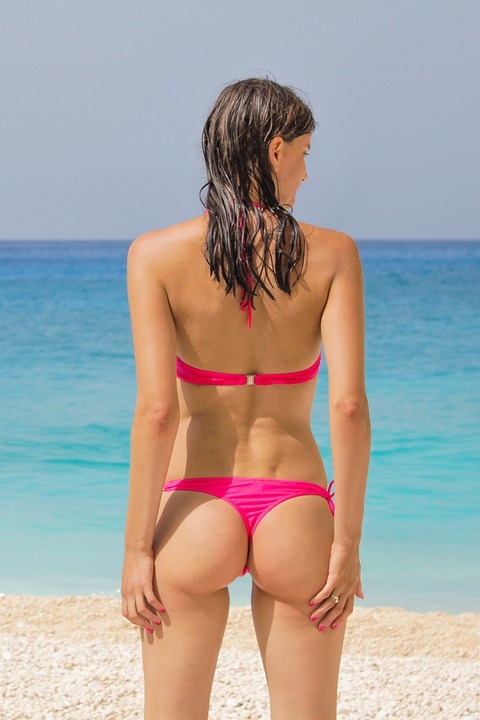Bikini Wax for Beginners: A Comprehensive Guide to Smooth and Confident Skin
Are you considering getting a Bikini Wax but feeling unsure and nervous? Don’t worry; you’re not alone! Many women have questions and concerns when it comes to this hair removal method. In this article, we will guide you through the process, step by step, ensuring that you feel informed, empowered, and ready to embrace the confidence that comes with smooth skin. So, let’s dive in!
1. Understanding Bikini Waxing: What You Need to Know
Bikini waxing is a popular method of hair removal that involves the application of hot or cold Wax to the hair in the Bikini area, followed by the removal of the Wax, along with the unwanted hair, using a cloth strip or by pulling the Wax off directly. This process results in smooth, hair-free skin that lasts longer than other hair removal methods like shaving.
Before getting a Bikini Wax, it’s important to understand the different types of Bikini waxes available. The most common options are:
– Regular Bikini Wax: This type of waxing focuses on the areas that might be visible while wearing a Bikini or underwear. It removes hair from the sides of the Bikini Line and the top, leaving some hair in the middle.
– French Bikini Wax: A French Bikini Wax takes it a step further and removes more hair from the front, leaving only a thin strip or triangle.
– Brazilian Bikini Wax: The Brazilian Wax removes almost all hair in the Bikini area, including the front, back, and everything in between. However, you can customize the amount of hair you want to remove according to your comfort level.
– Hollywood Bikini Wax: Similar to the Brazilian Wax, the Hollywood Wax removes all hair from the Bikini area, leaving you completely hair-free.
2. Preparing for Your Bikini Waxing Session
To ensure a smooth and successful Bikini waxing experience, there are a few things you can do to prepare yourself:
a. Hair Length: The ideal hair length for waxing is around 1/4 to 1/2 an inch. If your hair is too short, the Wax won’t be able to grip it properly. If it’s too long, it may cause more discomfort during the process. So, make sure to trim your hair to the appropriate length before your appointment.
b. Exfoliation: Gentle exfoliation a day or two before your waxing session helps remove dead skin cells and allows the Wax to adhere better to the hair. Use a gentle scrub or exfoliating glove to avoid irritation.
c. Avoid Sun Exposure: It’s best to avoid sunbathing or using tanning beds before your waxing session, as sunburned or tanned skin can be more sensitive and prone to irritation.
d. Pain Management: If you’re worried about the pain, consider taking a mild pain reliever, such as ibuprofen, about 30 minutes before your appointment. This can help minimize discomfort during the process.
3. What to Expect During Your Bikini Waxing Session
Now that you’re well-prepared, let’s walk through what typically happens during a Bikini waxing session:
a. Consultation: Your esthetician will have a consultation with you to understand your desired outcome and the type of Bikini Wax you want. They will also ask about any allergies, skin conditions, or medications you may be taking to ensure your safety.
b. Prepping the Area: Your esthetician will clean the Bikini area and apply a light powder to absorb any moisture, allowing the Wax to adhere better to the hair.
c. Wax Application: The esthetician will apply warm Wax or strip Wax to small sections of your Bikini area using a spatula or a roller, depending on the type of Wax used. They will then press a cloth strip firmly onto the Wax, allowing it to cool and adhere to the hair.
d. Hair Removal: Once the Wax has cooled and adhered to the hair, your esthetician will swiftly pull off the cloth strip, removing the Wax and the unwanted hair. They will repeat this process until all the desired areas are waxed.
e. Soothing and Finishing Touches: After the hair removal process, your esthetician may apply a soothing lotion or aloe vera gel to calm the skin and reduce any redness or sensitivity.
4. Post-Wax Care: Nurturing Your Skin After a Bikini Wax
Aftercare is essential to ensure that your skin remains smooth and healthy following a Bikini Wax. Here are some tips to take care of your skin post-Wax:
a. Avoid Heat and Friction: For the next 24-48 hours, avoid hot baths, saunas, steam rooms, and activities that may cause excessive sweating. Friction from tight clothing can also irritate the freshly waxed skin, so opt for loose-fitting clothes.
b. Moisturize: Keep your skin hydrated by applying a gentle, fragrance-free moisturizer daily. Avoid scented lotions or creams, as they may irritate the skin.
c. Exfoliate Gently: After a few days, you can start exfoliating the waxed area to prevent ingrown hairs. Use a gentle exfoliating scrub or brush, focusing on the Bikini Line area.
d. Avoid Sun Exposure: Protect your newly waxed skin from direct sun exposure for at least 24 hours. If you need to be in the sun, apply sunscreen with a high SPF to prevent sunburn and skin damage.
5. Frequently Asked Questions About Bikini Waxing
a. Does Bikini waxing hurt? The level of discomfort varies from person to person, but most people experience some level of pain during waxing. However, the pain is temporary and diminishes with each session as hair becomes finer.
b. How long does a Bikini Wax last? The results of a Bikini Wax can last anywhere from two to six weeks, depending on your hair growth cycle. Regular waxing sessions can eventually lead to a reduction in hair growth.
c. Can I Wax at home or should I visit a professional? While there are at-home waxing kits available, it’s recommended to visit a professional for your first few sessions. They have the expertise to ensure a safe and effective waxing experience.
d. Can I get a Bikini Wax while on my period? It’s best to avoid waxing during your period, as the skin may be more sensitive and prone to discomfort.
e. Are there any risks or side effects? While Bikini waxing is generally safe, there is a risk of mild side effects such as redness, irritation, or ingrown hairs. Following proper aftercare instructions and visiting a reputable salon can minimize these risks.
In conclusion, Bikini waxing can be a great way to achieve smooth and confident skin. By understanding the process, preparing beforehand, and following proper aftercare, you can have a successful and satisfying experience. Remember, practice makes perfect, and with each session, you’ll become more comfortable and confident in your decision to embrace a Bikini Wax.
Most Asked Questions Concerning Bikini Wax For Beginners
What is a Bikini Wax and why would someone get one?
A Bikini Wax is a hair removal procedure that involves the removal of pubic hair in the Bikini area using hot Wax. Many individuals choose to get a Bikini Wax for various reasons, including hygiene, personal preference, and to achieve a smoother appearance in swimwear.
Important information:
1. A Bikini Wax involves the removal of pubic hair in the Bikini area.
2. It is a popular choice for individuals looking for a smoother appearance in swimwear.
3. Hygiene and personal preference are common reasons for getting a Bikini Wax.
How long does a Bikini Wax last?
The duration of a Bikini Wax can vary depending on several factors, including the individual’s hair growth rate and the type of Wax used. On average, a Bikini Wax can last anywhere from three to six weeks before new hair growth becomes noticeable.
Important information:
1. The duration of a Bikini Wax can vary from person to person.
2. On average, a Bikini Wax can last three to six weeks.
3. Factors such as hair growth rate and type of Wax used can affect the duration of a Bikini Wax.
Are there different types of Bikini waxes?
Yes, there are different types of Bikini waxes that cater to individual preferences and comfort levels. Some common types include the Bikini Line Wax, which removes hair from the sides and top of the Bikini area, and the Brazilian Wax, which removes almost all pubic hair, leaving only a small strip or triangle.
Important information:
1. Different types of Bikini waxes cater to individual preferences and comfort levels.
2. The Bikini Line Wax removes hair from the sides and top of the Bikini area.
3. The Brazilian Wax removes almost all pubic hair, leaving only a small strip or triangle.
Is a Bikini Wax painful?
While everyone’s pain tolerance is different, it is common for individuals to experience some discomfort during a Bikini Wax. The level of pain can also vary depending on factors such as the individual’s sensitivity, the skill of the esthetician, and the type of Wax used. However, many individuals find that the pain is tolerable and diminishes with subsequent waxing sessions.
Important information:
1. A Bikini Wax can cause some discomfort, but pain tolerance varies from person to person.
2. Factors such as sensitivity, esthetician’s skill, and type of Wax used can influence the level of pain.
3. The pain is often tolerable and tends to lessen with repeated waxing sessions.
How should I prepare for a Bikini Wax?
To prepare for a Bikini Wax, there are a few steps you can take to ensure the best possible experience. It is recommended to trim the hair to about a quarter-inch in length before your appointment, avoid sun exposure and tanning beds for at least 24 hours prior to the Wax, and exfoliate the area gently a day or two before the appointment. Additionally, it is advisable to wear loose-fitting clothing to the appointment to minimize irritation after the waxing.
Important information:
1. Trim the hair to about a quarter-inch in length before the appointment.
2. Avoid sun exposure and tanning beds for at least 24 hours prior to the Wax.
3. Gently exfoliate the area a day or two before the appointment and wear loose-fitting clothing to minimize post-waxing irritation.
1. Bikini waxing is extremely painful
Contrary to popular belief, Bikini waxing does not have to be an excruciatingly painful experience. While it is true that waxing involves some discomfort, especially for beginners, the level of pain varies from person to person. Factors such as pain tolerance, individual sensitivity, and the skill of the esthetician can all influence the level of discomfort experienced during a Bikini Wax. Moreover, many estheticians utilize techniques and products that can help minimize pain and discomfort, such as using numbing creams or applying pressure to the area being waxed.
2. Bikini waxing is only for women
One common misconception about Bikini waxing is that it is exclusively for women. However, this is far from the truth. Men also opt for Bikini waxing, especially those who are involved in sports such as bodybuilding, swimming, or cycling. Moreover, some men prefer the aesthetic look and feel of a clean and groomed Bikini area. The popularity of male Bikini waxing has been on the rise in recent years, with many waxing salons offering specialized services for men.
3. You need to grow out your hair for weeks before waxing
Another misconception about Bikini waxing is that you need to have long hair before getting waxed. While it is true that the hair needs to be a certain length for the Wax to effectively remove it, this does not mean you have to endure weeks of growth. In fact, most estheticians recommend that the hair be around ¼ inch in length for optimal results. This means that you can still schedule a Bikini Wax even if you have recently trimmed or shaved the area. However, it is important to avoid shaving or trimming the hair too short before waxing, as this may make it difficult for the Wax to grip the hair.
4. All Bikini waxes are the same
Many people mistakenly believe that all Bikini waxes are the same. In reality, there are various types of Bikini waxes, each targeting different areas and levels of hair removal. The basic Bikini Wax typically removes hair from the sides and top of the Bikini area, while the Brazilian Wax removes almost all hair from the front, back, and everything in between. Additionally, there are variations such as the French Wax, which leaves a small strip of hair, and the Hollywood Wax, which removes all hair from the entire Bikini area. It is important to communicate your desired level of hair removal with your esthetician to ensure you receive the right type of Bikini Wax for your preferences.
5. Bikini waxing causes permanent damage to the skin
A common misconception about Bikini waxing is that it can permanently damage the skin. While waxing does involve removing hair from the root, which can cause some temporary redness, inflammation, or minor irritation, it does not typically result in permanent damage. In fact, with proper aftercare and regular waxing, the skin in the Bikini area can become smoother and less prone to irritation over time. It is important to follow the esthetician’s instructions for post-waxing care, such as avoiding hot baths, tight clothing, or excessive sweating, to minimize any potential discomfort or irritation.


